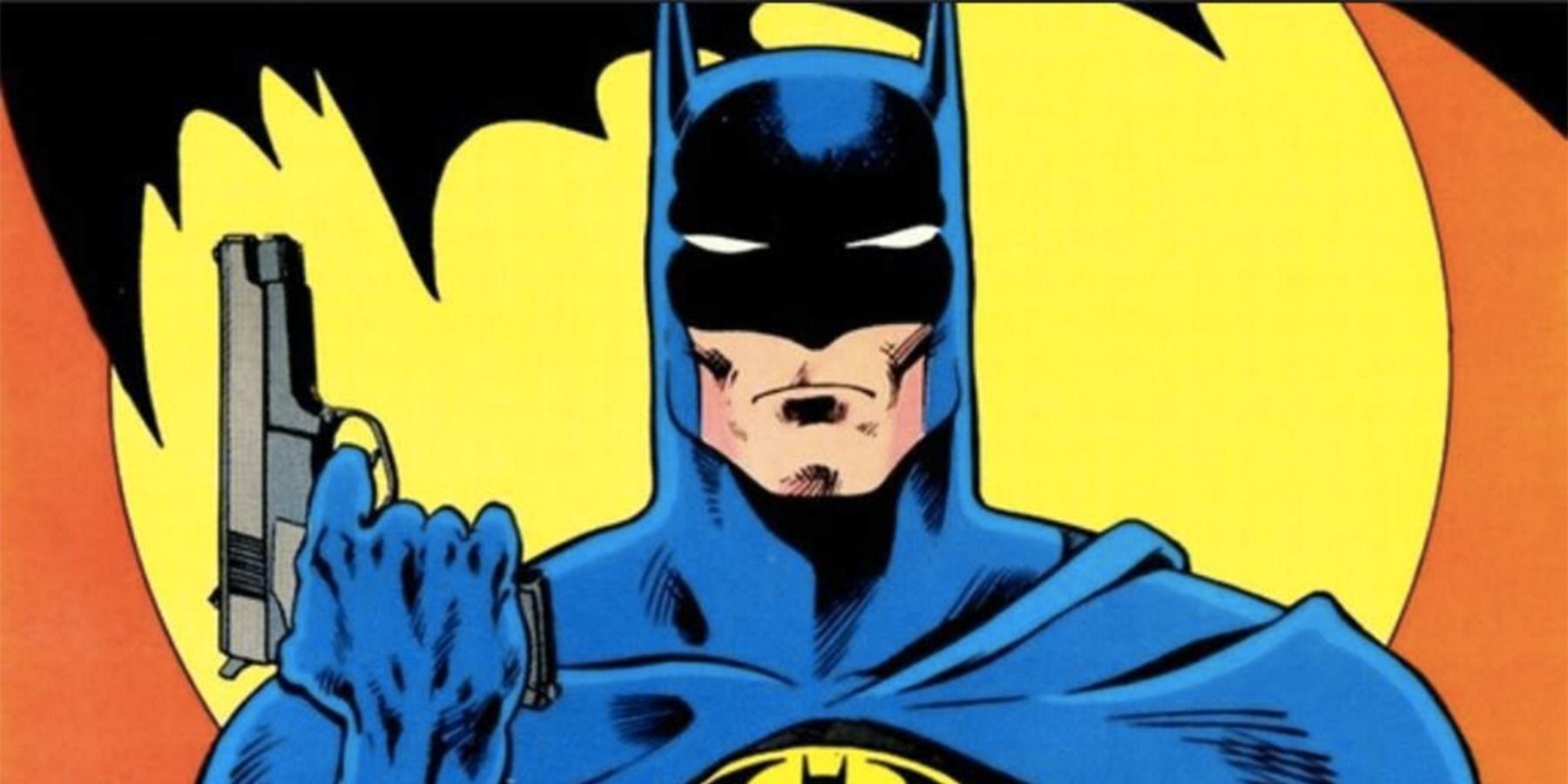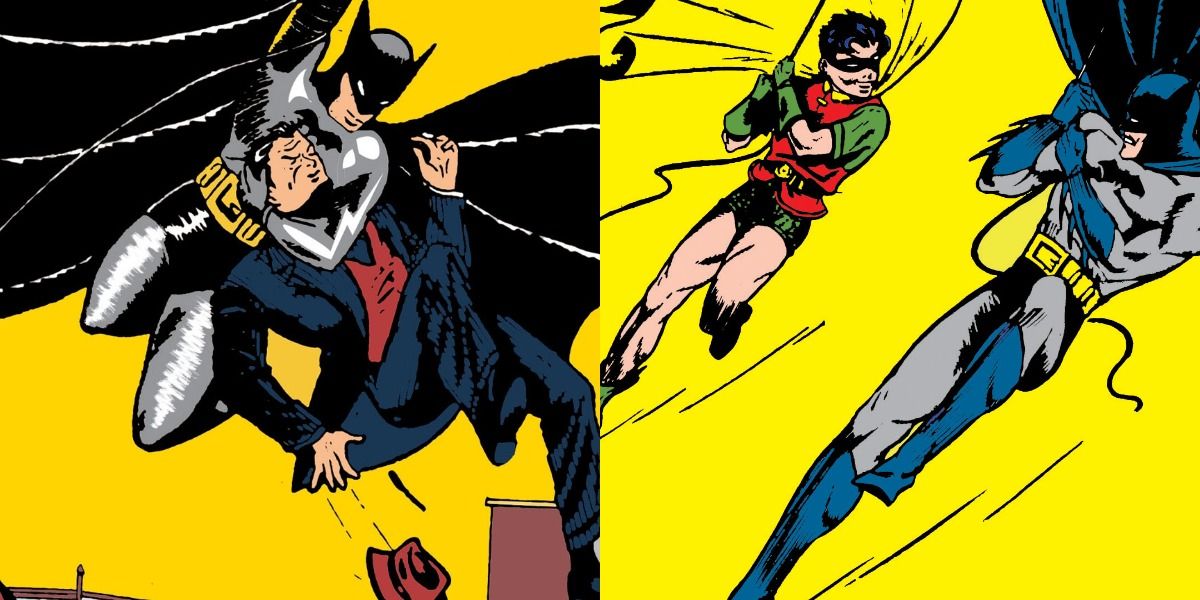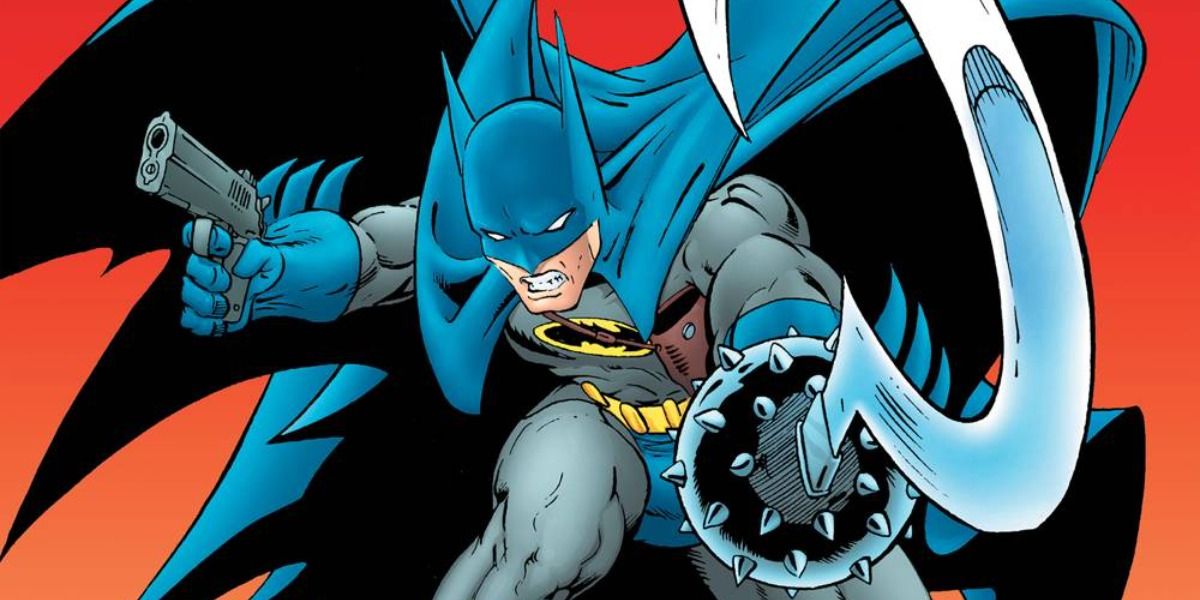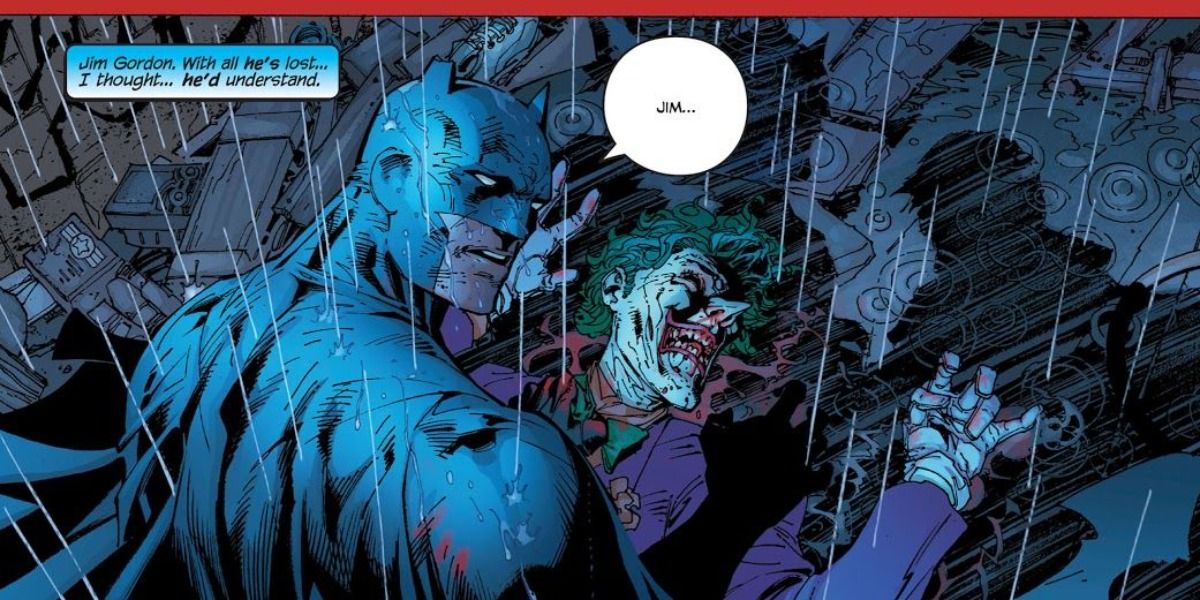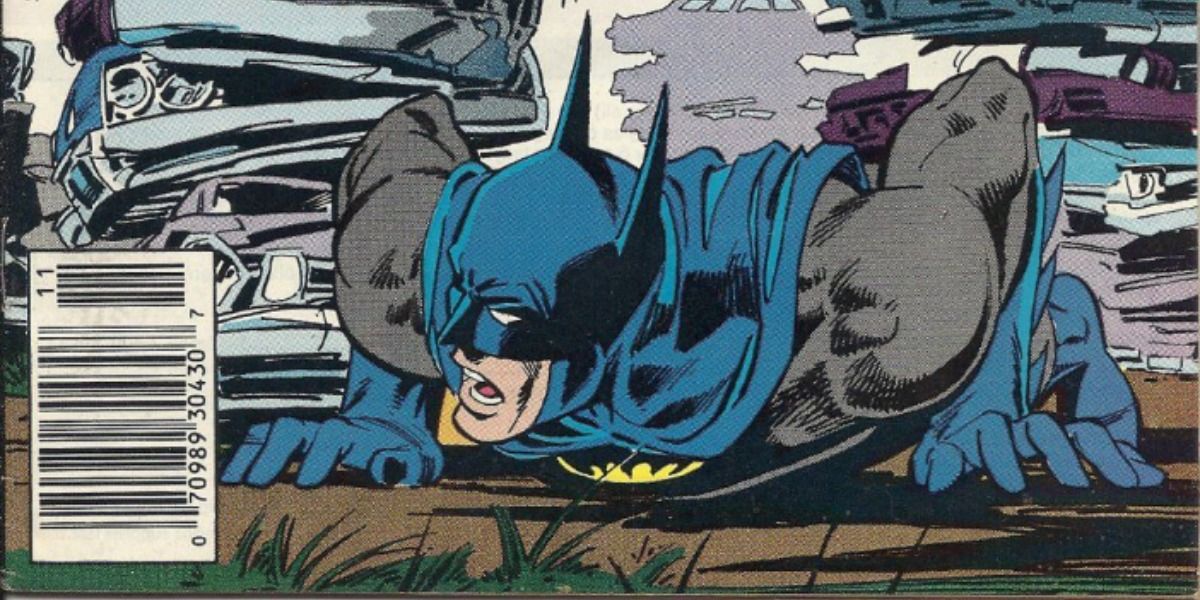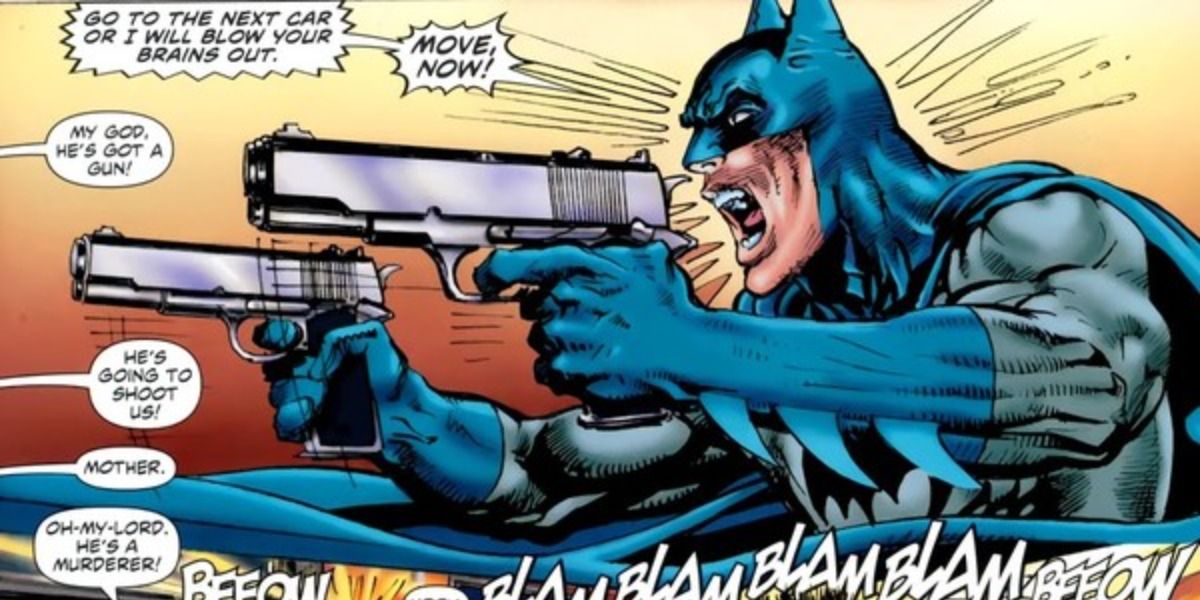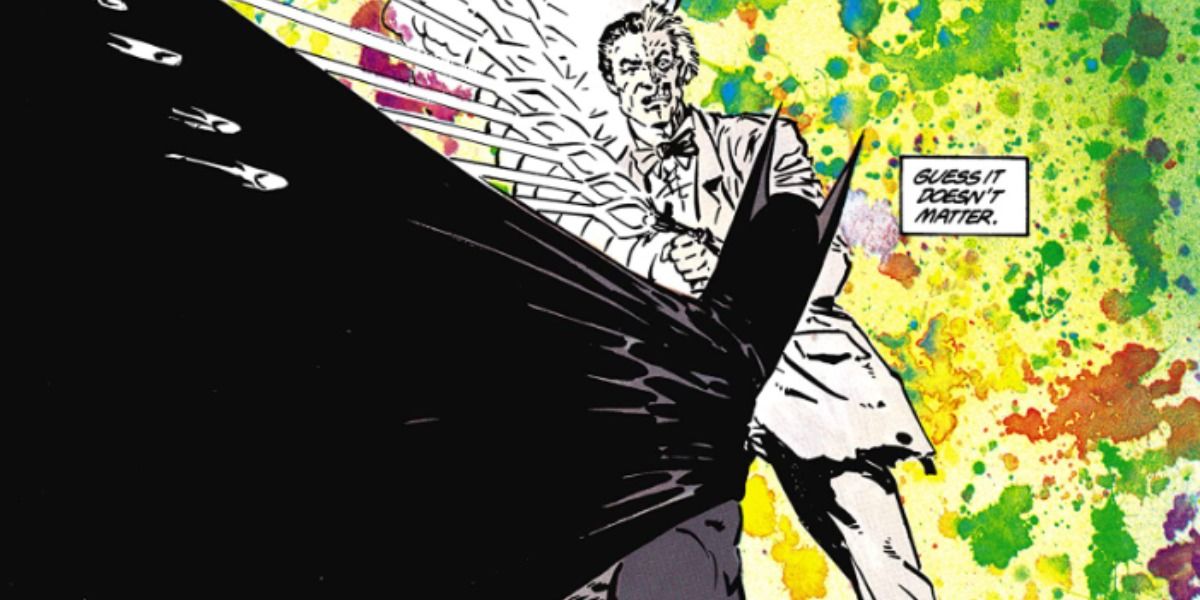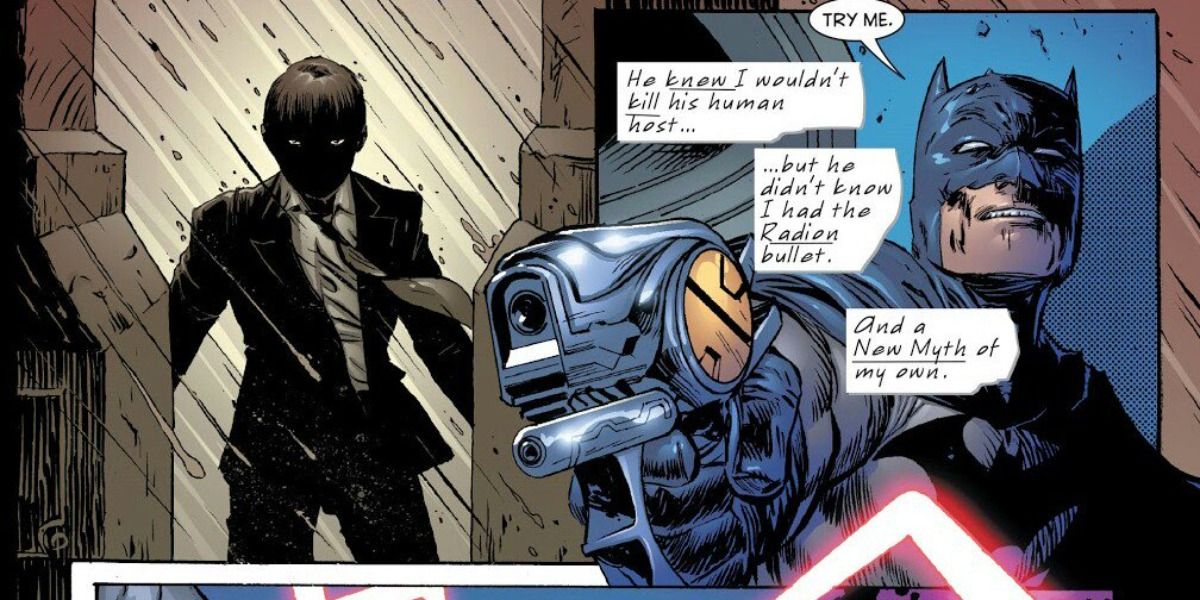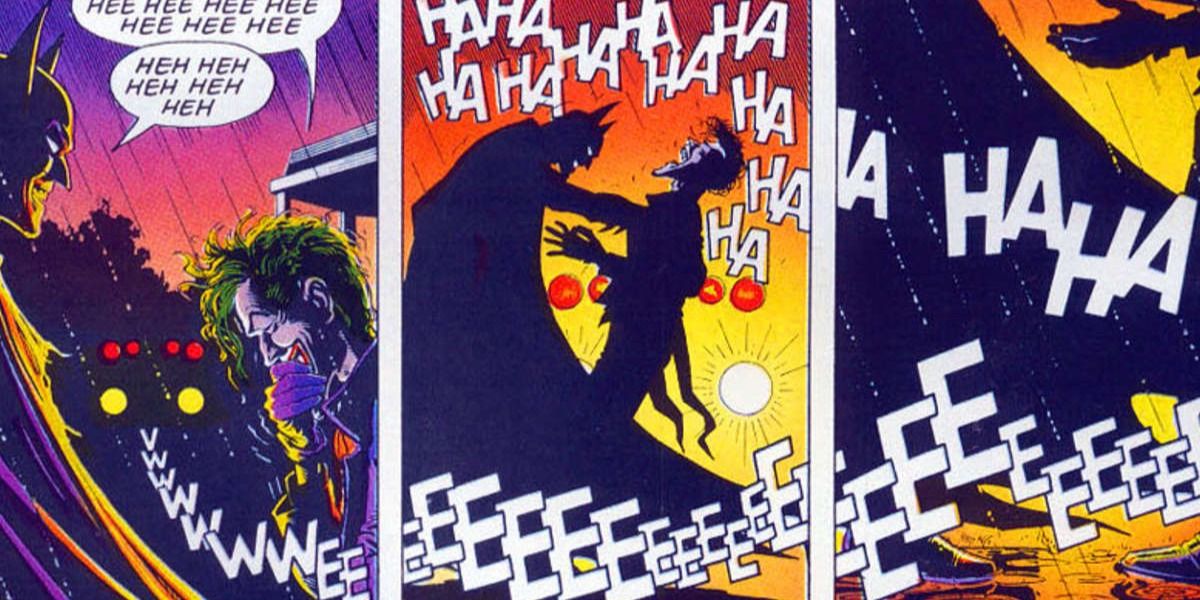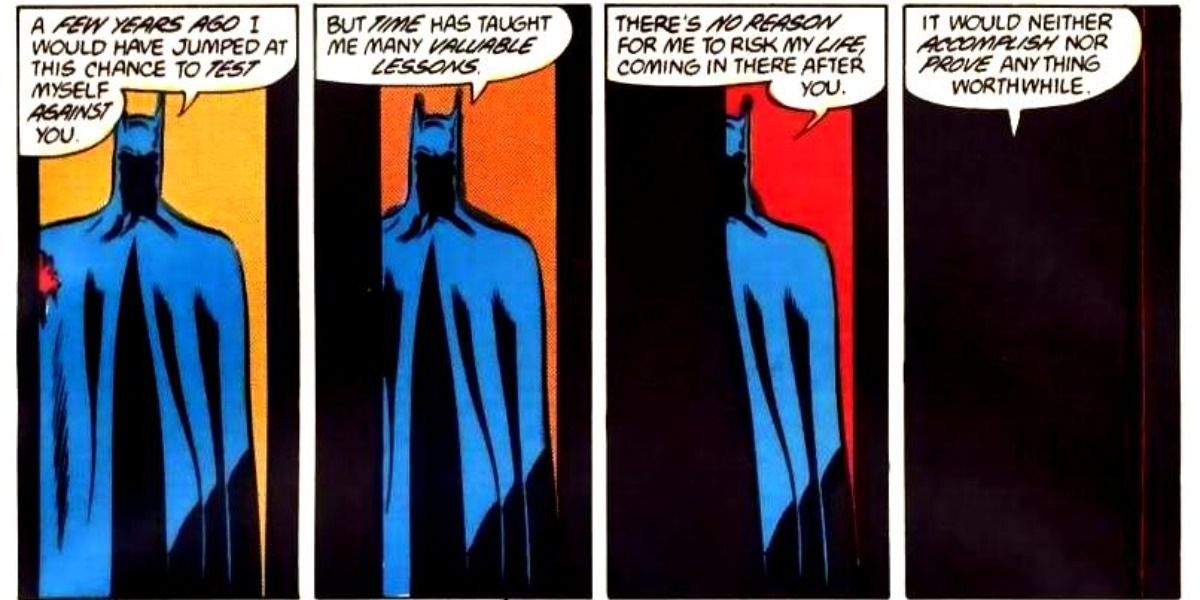With The Batman's release date now closer than ever, fan speculation towards what Matt Reeves' incarnation of Batman will be like is at a fever pitch. One of the biggest questions involves Batman's infamous no-kill rule, as both Michael Keaton and Ben Affleck have thrown that aspect out the window.
Will Robert Pattinson's Bruce Wayne kill criminals? It's certainly possible, but before anyone becomes upset by this idea, remember that Batman's no-kill rule has been bent on occasion. In fact, not only has Batman blatantly killed people in the past, he's come within an inch of killing on numerous occasions.
Detective Comics #27-Batman #1
Batman began his career in comics by knocking a man into a vat of acid before saying "A fitting end for his kind," with his first few appearances following a similar path. In the early days of Batman, no villain deserved redemption in the Caped Crusader's eyes, and the body count he wracked up was staggering.
Once Robin entered the fray however, Batman slowed his roll but ended his killing streak by seemingly offing The Joker. However, not only did The Clown Prince of Crime come back not long afterward, but The Golden Age stories were rendered non-canon by Crisis on Infinite Earths, meaning that modern Batman has yet to fully break his vow.
Tower Of Babel
Not only has Batman nearly killed criminals, but he's also been an awful friend, as the "Tower of Babel" story saw Batman nearly get his Justice League cohorts killed. Taking places in the pages of JLA, "Tower of Babel" revealed that Batman had created contingency plans to defeat The Justice League, which were stolen by Ra's Al Ghul.
The thing is, while Batman openly claimed that none of his plans would've been lethal, when they got into Ra's Al Ghul's hands, he could've easily made them lethal, meaning Batman would have been 100% responsible for the death of seven heroes. Making it worse, Batman showed next to no remorse for his actions.
Year Two
Regardless of its standing in canon, Batman: Year Two is considered an inferior pseudo-sequel to Batman: Year One, even though it does have a compelling premise. Having become fed up with Gotham's criminal element, Batman decides to start packing heat, adding the gun that killed his parents to his arsenal.
Year Two saw Batman come real close to becoming a lethal protector, but an encounter with Joe Chill, the man who murdered his parents ends up changing his mind. Batman then left the gun in the cornerstone of a building, his vow maintained.
Hush
While Hush couldn't carry a comic nowadays, he made a major impact upon his debut back in the early 2000s. In the "Hush" storyline that introduced the character, Hush set out to utterly destroy Batman, with one of the trials he gave Batman testing the hero's one rule.
After stopping Harley Quinn from sticking up a theatre, Batman found The Joker standing over the body of his childhood friend Thomas Elliot. Overcome with anger for the death of his friend, Batman nearly strangled Joker to death before being stopped by Jim Gordon.
Consequences
Every action has consequences, something that a little tale from the pages of Detective Comics illustrates. While Batman has killed people in the movies, Post-Crisis Batman is pretty consistent about not killing people, but stories like "Consequences" raise some really interesting questions.
At the end of the issue, Batman and Robin did battle with a group of criminals in a dump where piles of cars dangle precariously. Batman jumped atop one of those piles before jumping off as the pile toppled over onto a criminal, which killed him. While Batman didn't directly murder the criminal, it is a moment that raises eyebrows.
Odyssey
Much like with Batman: Year Two, Batman: Odyssey's place in DC's continuity is ambiguous. The series saw iconic Batman artist Neal Adams promoted to writer and this moment is proof that he's best suited for artwork.
In this scene, Batman needed a train car emptied out, so he pulled out two guns and began firing, scaring the passengers into the next car. Had Batman's aim been slightly off, he could have murdered someone, making him no better than the man who killed his parents.
The Cult
Stories like Year One get more love, but The Cult is easily one of the best Batman stories to come from the 1980s. Very early in the story, Batman was tortured by an underground cult led by the mysterious Deacon Blackfire and for a brief moment, he was indoctrinated into it.
During a hallucination caused by drugs that were fed to him, Batman battled Two-Face before pulling out a machine gun and riddling him full of bullets. When the high wore off, Batman discovered that Blackfire's followers were killing members of Gotham's mafia, there was a body in front of him, and he was holding a machine gun. Though it's left rather ambiguous, it doesn't take much of an imagination to put together what's being implied.
Final Crisis
When Batman openly shooting Darkseid with a gun is the most understandable part of a story, Grant Morrison is probably involved. In their absolutely maddening story Final Crisis, Darkseid's evil plan to conquer reality, which is achieved through what many fans have called utterly baffling means, is seemingly thwarted when Batman shows up and shoots him with a Radion bullet.
Though he fails and seemingly pays for it with his life, the intent to kill Darkseid is very much there. Ultimately, Barry Allen's Flash would stop Darkseid, but if Batman had simply gone for the head, the story would've been over much sooner.
The Killing Joke
The Killing Joke is a story that plays with ambiguity on several occasions. For example, the story sets up a potential background for The Joker that paints him as a sympathetic character, only for The Alabastor Jester to imply it's all a big lie. Another ambiguous element is the ending, where Batman seemingly kills The Joker.
After telling Batman a joke, Joker finally gets The Caped Crusader to laugh as the police arrive, with the hero then grabbing The Joker around the neck area. As the panels go on, the sirens keep wailing, but the laughter stops, implying that Batman finally did what most thought impossible.
Ten Nights Of The Beast
While The Killing Joke's placement in continuity has wiped Joker's implied death out, KGBeast seemingly got no such grace. In "Ten Nights of The Beast," Batman is run ragged when Soviet hitman KGBeast begins murdering people in Gotham.
At the end of the story, Batman, perhaps bolstered by the fact that The FBI wants KGBeast dead anyway, leaves him to die in an abandoned subway tunnel. KGBeast would return, but this moment is easily one of the most shocking moments in all of Batman comics.

